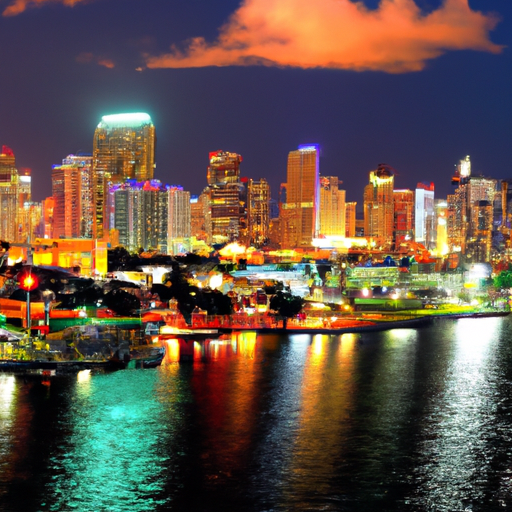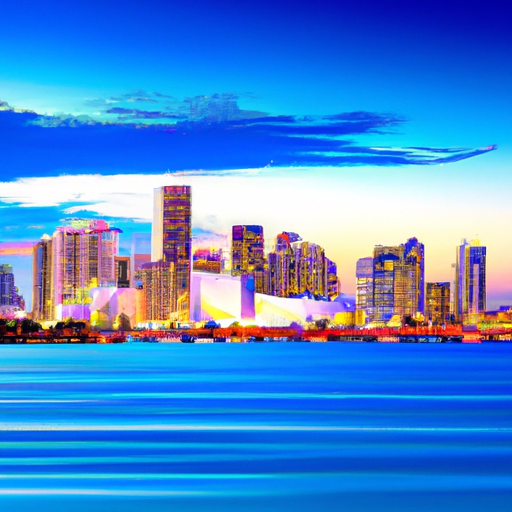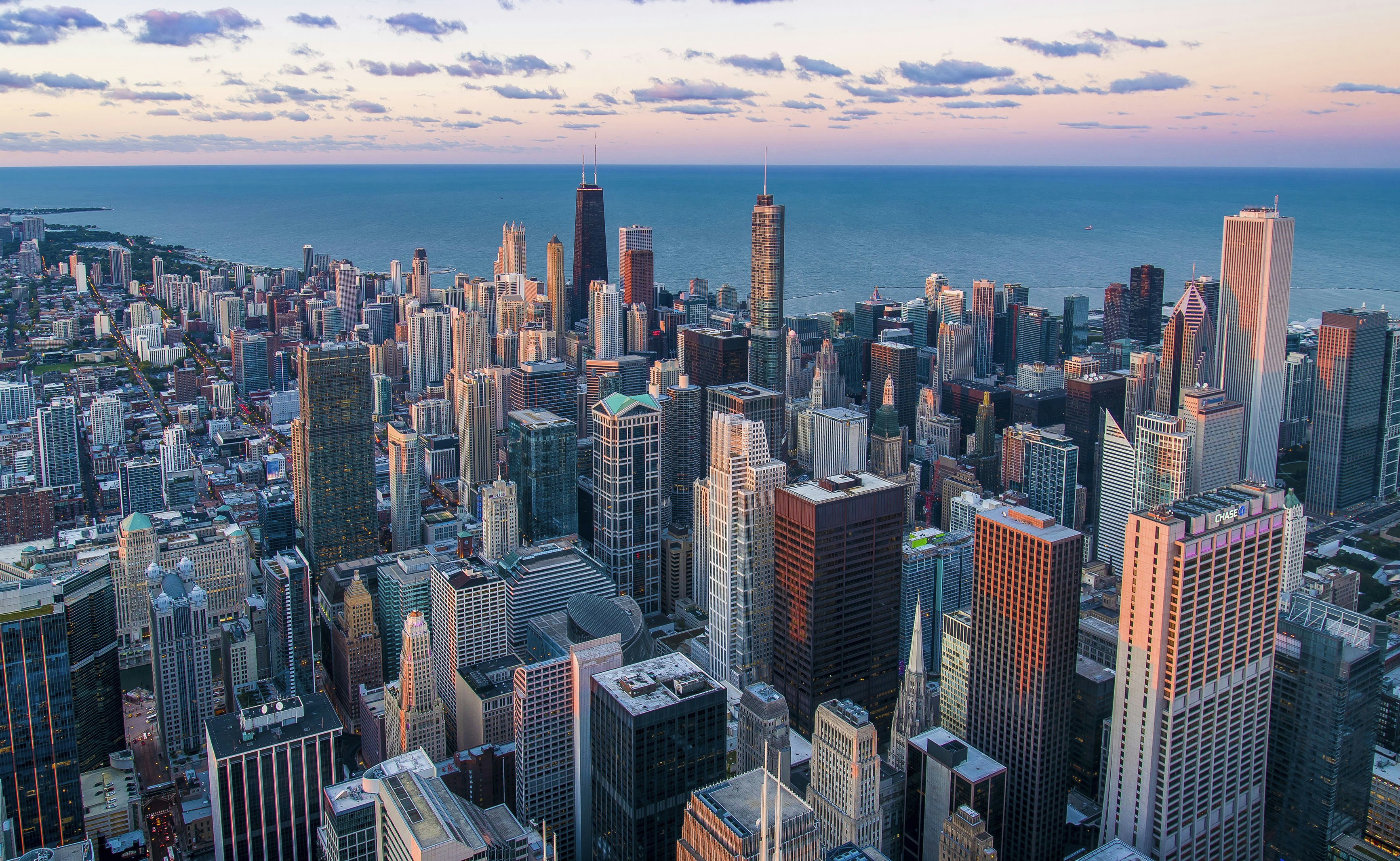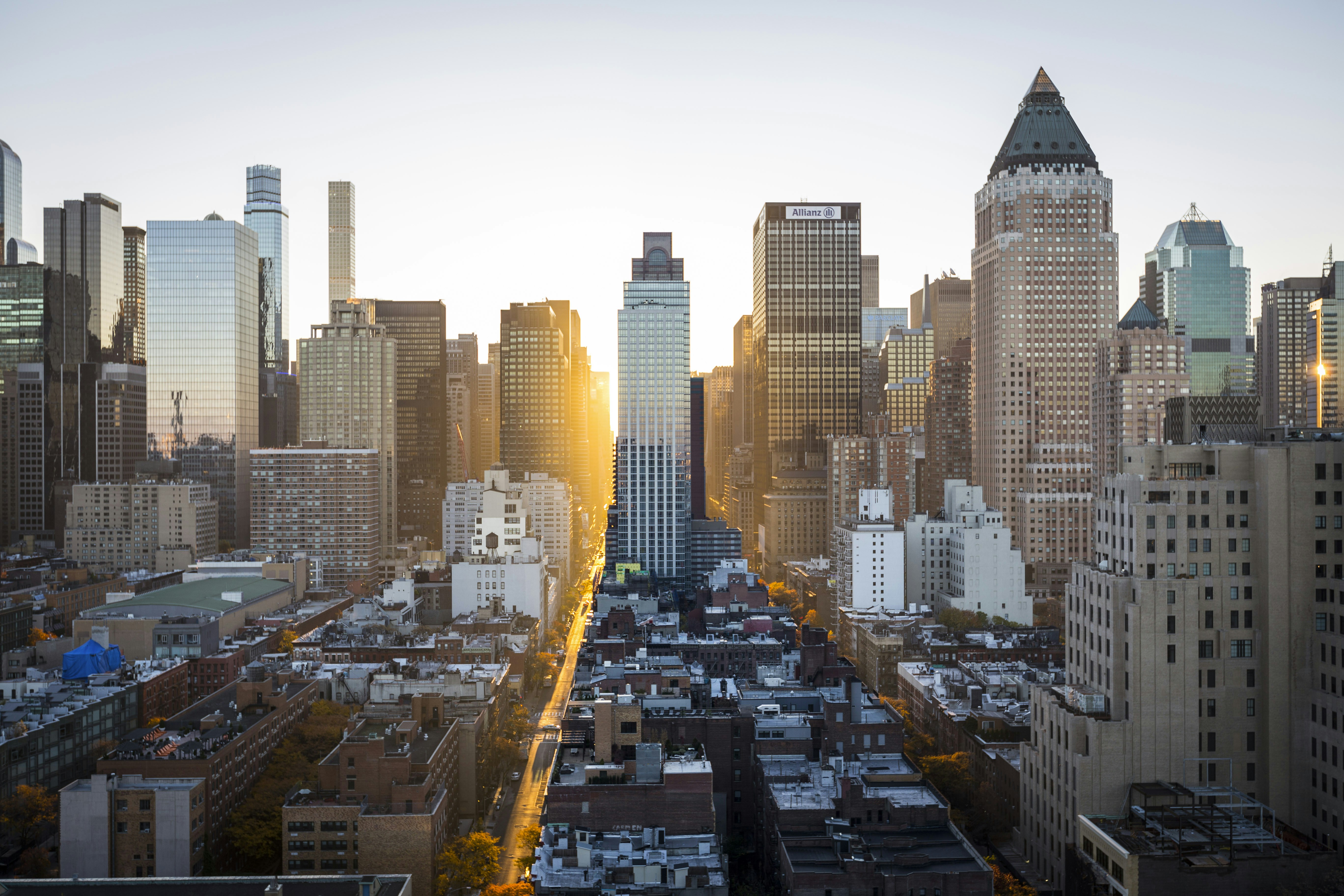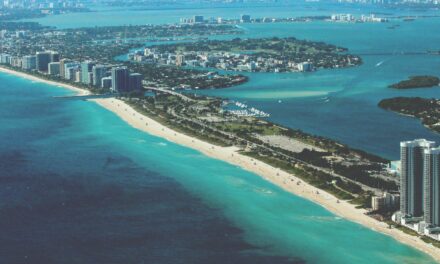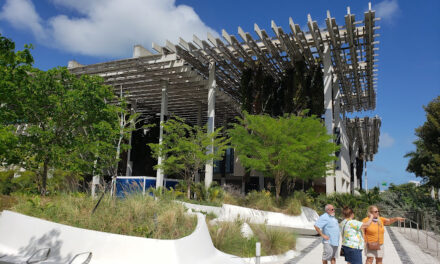In this article, you will learn about the current population of Miami, Florida. Miami is a vibrant city known for its beautiful beaches, diverse culture, and thriving nightlife. With its warm climate and wide range of attractions, it is no wonder that Miami is a popular destination for tourists and a desirable place to live.
As of 2021, the population of Miami is estimated to be around 463,347. However, this number does not include the surrounding metropolitan area, which brings the total population to over 6 million people. Miami is a melting pot of different cultures, with a large Hispanic and Latino population, as well as communities from various Caribbean and European countries. Whether you are planning a visit or considering moving to Miami, understanding its population will give you a better sense of the city’s diversity and vibrant atmosphere. Miami, a vibrant and bustling city located in the southeastern part of Florida, is a melting pot of different cultures and ethnicities. With its beautiful beaches, diverse population, and thriving economy, it is no wonder that Miami is often referred to as the “Gateway to the Americas.” In this article, we will delve into the demographics of Miami, exploring its population, economic factors, housing and infrastructure, education and healthcare, cultural and recreational activities, tourism industry, environmental factors, social services and community, as well as its government and governance.
Demographics of Miami
The current population of Miami
Miami is home to a diverse and rapidly growing population. As of the latest census data, the population of Miami stands at over 2.7 million people. This makes Miami the second-most populous city in Florida, and the eighth-most populous city in the United States. Given its high population density, Miami is a bustling metropolis with a vibrant energy that is evident in its cultural diversity and economic opportunities.
Population growth in Miami over the years
Miami has experienced significant population growth over the years. In fact, from 2010 to 2020, the population of Miami increased by an impressive 13%. This growth can be attributed to a variety of factors, including migration from other parts of the United States, international immigration, and a high birth rate. The influx of people into Miami has contributed to its dynamic and ever-evolving landscape.
Composition of Miami’s population by ethnicity
Miami is known for its diverse population, with people from all corners of the world calling the city home. The ethnic makeup of Miami is a true reflection of its rich cultural heritage. The largest ethnic group in Miami is Hispanic or Latino, accounting for approximately 70% of the population. Other significant ethnic groups include African Americans, non-Hispanic whites, and Asian Americans. This multicultural mix adds to the city’s vibrant atmosphere and contributes to the diverse array of cuisines, languages, and traditions found in Miami.
Distribution of population by age groups in Miami
Miami has a relatively young population, with a median age of 39 years old. The city is known for attracting young professionals and entrepreneurs seeking opportunities in its thriving industries. The age distribution in Miami is fairly balanced, with a significant proportion of the population falling between the ages of 18 and 64. However, there is also a sizable elderly population, with individuals aged 65 and above accounting for approximately 14% of the total population.
Economic Factors
Impact of population on Miami’s economy
The population of Miami plays a crucial role in driving its economy. With a large and diverse consumer base, businesses in Miami have a wide range of opportunities to thrive. The city is a major hub for finance, international trade, tourism, and real estate, which contribute significantly to its economic growth. The population of Miami also creates a demand for a variety of goods and services, thereby fostering entrepreneurship and job creation.
Employment opportunities in Miami
Miami offers a wealth of employment opportunities across various sectors. The city is especially known for its strong job market in industries such as tourism and hospitality, finance and banking, healthcare, technology, and creative arts. The thriving tourism industry in Miami, in particular, provides a plethora of job opportunities in hotels, restaurants, and entertainment venues. With its flourishing economy, Miami continues to attract individuals seeking stable employment and career growth.
Income levels among Miami’s population
Miami’s population represents a wide range of socioeconomic backgrounds, with varying income levels. The median household income in Miami is around $52,000 per year, which is slightly lower than the national average. However, it is important to note that income levels can vary significantly depending on factors such as education, occupation, and industry. While many individuals in Miami enjoy a comfortable standard of living, there are also pockets of poverty, highlighting the need for economic development and social support initiatives.
Cost of living in Miami
One important economic consideration for residents and potential newcomers is the cost of living in Miami. As a major city with high demand for housing and other goods and services, Miami can be relatively expensive. Housing costs in particular can be a significant expense, with rental prices and home prices often higher than the national average. However, it is worth noting that the cost of living can vary depending on the neighborhood and lifestyle choices, and there are also affordable housing options available in certain areas of Miami.
Housing and Infrastructure
Housing options in Miami
Miami offers a diverse range of housing options to cater to its growing population. From high-rise condominiums and luxury waterfront homes to suburban single-family houses and rental apartments, Miami’s real estate market has something for everyone. The city’s architecture is known for its modern and tropical designs, with many buildings offering stunning views of the ocean or city skyline. Whether you prefer to live in the heart of downtown or in a quiet suburban neighborhood, Miami has a housing option to suit your needs and lifestyle.
Rental and homeownership statistics
In Miami, the majority of residents are renters rather than homeowners. This is due to a combination of factors, including the city’s large transient population, the high cost of homeownership, and the availability of rental options. According to recent data, approximately 54% of housing units in Miami are occupied by renters, while 46% are owner-occupied. The rental market in Miami is highly competitive, with rental prices varying depending on location, size, and amenities.
Infrastructure development in Miami
With its growing population and thriving economy, Miami has made significant investments in its infrastructure to accommodate its residents and support its various industries. The city boasts modern transportation systems, including an extensive network of highways, public buses, and a metro rail system known as Metrorail. Miami is also home to an international airport, PortMiami, and a robust network of seaports, which contribute to its position as a major global gateway for trade and tourism.
Transportation systems and connectivity
Miami’s transportation infrastructure provides residents and visitors with convenient options for getting around the city. The Metrorail and Metromover systems offer reliable public transportation, connecting various neighborhoods within Miami and its surrounding areas. Additionally, the city has a well-developed road network and ample parking facilities, making it easy to navigate by car. Miami also offers alternative modes of transportation, such as bicycles and scooters, as well as ride-sharing services like Uber and Lyft, providing flexibility and convenience for commuters.
Education and Healthcare
Education system in Miami
Miami is home to a robust education system, providing residents with a wide range of schooling options. The Miami-Dade County Public Schools district is the fourth-largest school district in the United States, offering both traditional public schools and magnet schools with specialized programs. Additionally, there are numerous private schools, charter schools, and alternative education programs available in Miami. The city also hosts several prestigious universities and colleges, making it an attractive destination for higher education.
School enrollment rates
Miami has a relatively high school enrollment rate, with a significant proportion of the population pursuing formal education. The city’s public school system is known for its focus on academic excellence, as well as its emphasis on arts, sports, and extracurricular activities. Additionally, Miami has a strong network of early childhood education centers and preschools, ensuring that children have access to quality education from an early age.
Higher education institutions and opportunities
Miami boasts several higher education institutions that provide a wide range of academic programs and opportunities for students. The University of Miami, Florida International University, and Miami Dade College are among the notable institutions in the city. These universities offer a diverse array of undergraduate and graduate programs, attracting students from around the world. The presence of these institutions contributes to Miami’s intellectual capital and fosters innovation and research in various fields.
Healthcare facilities and services in Miami
Miami is known for its world-class healthcare facilities and services, making it a regional hub for medical tourism and healthcare innovation. The city is home to numerous hospitals, clinics, and medical centers that offer specialized care in a wide range of disciplines. Additionally, Miami is a center for medical research, with many institutions conducting groundbreaking studies and clinical trials. The presence of top-notch healthcare facilities ensures that residents have access to high-quality medical care and contributes to the overall well-being of the population.
Cultural and Recreational Activities
Cultural diversity in Miami
Miami’s population is a mosaic of different cultures and ethnicities, resulting in a vibrant and multicultural city. The city’s rich cultural diversity is reflected in its food, music, art, and traditions. From Cuban cafes and traditional Haitian cuisine to art galleries showcasing Latin American artists, Miami offers a wide range of cultural experiences for residents and visitors alike. The city’s multicultural atmosphere has also given rise to a thriving international film and music scene, making it a destination for artists and performers from around the world.
Major cultural events and festivals
Miami hosts a myriad of cultural events and festivals throughout the year, celebrating the diverse heritage and traditions of its population. The annual Calle Ocho Festival, a vibrant street festival showcasing Latin American music, dance, and food, is one of the city’s most iconic events. Additionally, Miami hosts numerous art festivals, such as Art Basel Miami Beach and the Miami International Film Festival, attracting artists, filmmakers, and art enthusiasts from all over the world.
Recreational opportunities in Miami
Miami’s favorable climate and beautiful natural surroundings provide ample opportunities for outdoor recreation. The city is renowned for its pristine beaches, where residents and visitors can enjoy activities such as swimming, sunbathing, and watersports. Miami is also home to numerous parks and green spaces, offering opportunities for jogging, biking, and picnicking. Outdoor lovers can explore the Everglades National Park, located just a short drive from Miami, which is known for its unique ecosystem and diverse wildlife.
Sports and entertainment scene
Miami has a vibrant sports and entertainment scene, catering to a wide range of interests. The city is home to several professional sports teams, including the Miami Heat (NBA), Miami Dolphins (NFL), and Miami Marlins (MLB). Sports enthusiasts can catch a game at one of the city’s state-of-the-art stadiums or arenas and cheer on their favorite teams. Additionally, Miami offers a thriving nightlife scene, with restaurants, bars, and clubs offering live music, dancing, and entertainment.
Tourism in Miami
Impact of population on tourism industry
Miami’s population has a significant impact on its tourism industry. With a large and diverse population base, the city attracts visitors from around the world, contributing to the growth of the tourism sector. The influx of tourists stimulates the local economy, creating jobs and generating revenue for businesses in the hospitality, retail, and entertainment industries. Miami’s vibrant culture, beautiful beaches, and world-class attractions make it a popular destination for both domestic and international tourists.
Tourist attractions in Miami
Miami offers a plethora of tourist attractions for visitors to explore. From the iconic South Beach with its pastel-colored Art Deco buildings to the vibrant neighborhoods of Little Havana and Wynwood, the city has something for everyone. Visitors can also explore the historic Vizcaya Museum and Gardens, visit the renowned Pérez Art Museum Miami, or explore the colorful street murals in the Wynwood Walls. For nature enthusiasts, the Everglades National Park and Biscayne National Park offer unique opportunities to experience Florida’s diverse ecosystems.
Visitor demographics and trends
Miami attracts a diverse range of visitors from around the world. The city’s proximity to Latin America, as well as its reputation as a cosmopolitan and multicultural destination, makes it particularly popular among tourists from South America and Europe. Additionally, Miami is a popular destination for cruise ship passengers, with Miami serving as one of the largest cruise ports in the world. The city’s year-round warm climate and vibrant entertainment scene make it an attractive choice for visitors seeking sun, fun, and cultural experiences.
Accommodation options for tourists
Miami offers a wide range of accommodation options to cater to the needs and preferences of tourists. From luxurious beachfront resorts and boutique hotels to budget-friendly motels and vacation rentals, visitors have plenty of choices when it comes to finding a place to stay. The city’s tourism infrastructure is well-developed, with hotels and resorts offering world-class amenities and services. Additionally, Miami offers a variety of accommodation options for different types of travelers, whether they are seeking a relaxing beach getaway or a vibrant urban experience.
Environmental Factors
Impacts of population on the environment
The growing population of Miami has both positive and negative impacts on the environment. The city’s development and urbanization have resulted in the loss of natural habitats and the fragmentation of ecosystems. Additionally, increased demand for resources, such as water and energy, puts pressure on local natural resources. However, Miami has made significant efforts to mitigate these impacts through conservation initiatives, green building practices, and the preservation of green spaces.
Conservation efforts in Miami
Miami is committed to preserving its natural resources and protecting the environment. The city has implemented various conservation programs and initiatives to reduce energy consumption, promote recycling, and protect biodiversity. For example, Miami has invested in renewable energy sources, such as solar power, and has implemented water conservation measures to ensure the sustainable use of this precious resource. Additionally, the city has designated green spaces and parks, such as the Miami Beach Botanical Garden, which serve as havens for native plants and wildlife.
Climate and weather patterns in Miami
Miami is known for its tropical climate, characterized by warm temperatures and high humidity. The city experiences two distinct seasons: a wet season from May to October, and a dry season from November to April. Summers in Miami can be hot and humid, with temperatures often exceeding 90 degrees Fahrenheit (32 degrees Celsius). Winters are mild and pleasant, with temperatures typically ranging from the 60s to the 70s Fahrenheit (15 to 25 degrees Celsius). However, it is worth noting that Miami is prone to hurricanes and tropical storms, which can pose a risk to residents and visitors.
Natural attractions and outdoor activities
Miami’s natural surroundings offer a wealth of outdoor activities and opportunities for nature lovers. The city’s pristine beaches are a major draw for residents and tourists alike, providing opportunities for swimming, sunbathing, and water sports such as surfing and paddleboarding. Additionally, Miami is located in close proximity to unique natural areas, such as the Everglades National Park and Biscayne National Park. These protected areas offer opportunities for hiking, camping, birdwatching, and wildlife observation, allowing visitors to connect with nature and appreciate Florida’s diverse ecosystems.
Social Services and Community
Social services available in Miami
Miami is home to a range of social services that provide support and assistance to its residents. These services include community centers, social welfare programs, and organizations that address various needs, such as affordable housing, healthcare, education, and employment. Additionally, Miami has a strong network of non-profit organizations that work towards improving the quality of life for underserved populations and promoting social equity. The availability of social services in Miami ensures that residents have access to the support they need to thrive and succeed.
Community engagement and involvement
Miami’s population is actively engaged in community activities and initiatives, fostering a strong sense of belonging and pride. The city boasts numerous community organizations and volunteer groups that aim to improve the local community and address social issues. Residents of Miami come together to organize cultural events, clean-up campaigns, and neighborhood associations, promoting community cohesion and fostering a sense of civic responsibility.
Non-profit organizations and support
Miami is home to a vibrant non-profit sector that plays a vital role in addressing social issues and providing support to vulnerable populations. These organizations focus on a wide range of causes, including education, healthcare, homelessness, child welfare, and environmental conservation. The non-profit sector in Miami works closely with government agencies, businesses, and community members to implement impactful programs and initiatives that positively impact the lives of its residents.
Safety and crime rates in Miami
Like any major city, Miami faces challenges related to crime and safety. However, the city has made significant progress in improving safety and reducing crime rates in recent years. According to the latest data, overall crime rates in Miami have decreased over the past decade. The city has invested in community policing, implemented technology-driven solutions, and fostered partnerships between law enforcement agencies and community organizations. These efforts have resulted in safer neighborhoods and increased confidence among residents and visitors.
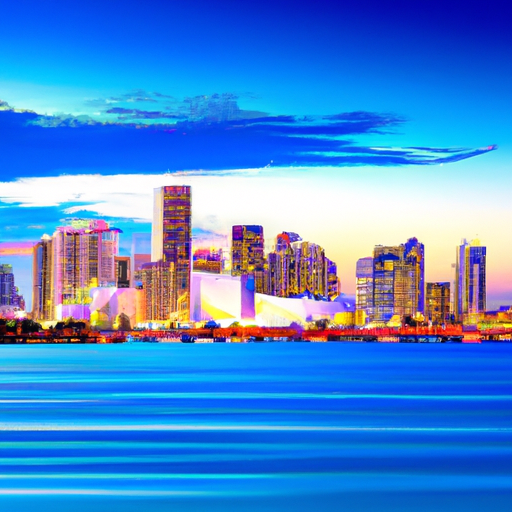
Government and Governance
Local government structure in Miami
Miami operates under a municipal government structure, with a mayor-council form of governance. The city is governed by a mayor, who is elected by the residents, and a city council, which consists of commissioners representing specific districts. The mayor and city council members work together to make policy decisions, allocate resources, and provide governance and services to the community. The local government in Miami focuses on ensuring the well-being of its residents and promoting sustainable development.
Political representation and leadership
The political representation in Miami reflects its diverse population. The city has a diverse group of elected officials representing different ethnicities, genders, and backgrounds. These representatives work towards addressing the needs and concerns of their constituents, championing social justice, and promoting inclusive policies. Miami’s political leadership is dedicated to fostering a responsive and accountable government that serves the best interests of its residents.
Public services and administration
Miami’s local government is responsible for providing a wide range of public services to its residents. These services include utilities, public safety, transportation, waste management, parks and recreation, and planning and zoning. The city’s administration works diligently to ensure the efficient delivery of these services, fostering a high quality of life for its residents and creating a business-friendly environment that supports economic growth.
Urban planning and development initiatives
Miami’s rapid population growth and urbanization have necessitated careful urban planning and development initiatives. The city has implemented comprehensive plans and zoning regulations to guide growth and ensure sustainable development. Additionally, Miami has invested in improving its infrastructure and public spaces, such as parks, waterfront areas, and walkways, to enhance the quality of life for its residents. The local government of Miami is committed to balanced growth and responsible urban development that preserves the city’s unique character and natural resources.
Conclusion
In conclusion, the population of Miami plays a pivotal role in shaping the city’s demographics, economy, housing, education, culture, and governance. With its diverse and rapidly growing population, Miami continues to evolve and thrive as a global city. While the city faces unique challenges associated with population growth, such as affordable housing and environmental sustainability, it also offers numerous opportunities for residents and visitors. Miami’s vibrant cultural scene, thriving economy, and natural beauty make it an attractive destination for individuals seeking a unique and dynamic urban experience. With proper planning and continued investment in its infrastructure and social services, Miami is poised to meet the needs of its ever-growing population and make strides towards a sustainable and prosperous future.
